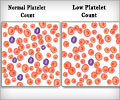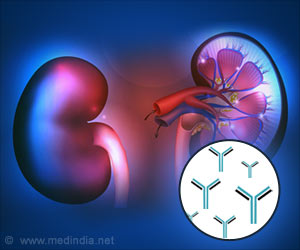A new approach for treating thrombocytopenia has been uncovered. Thrombocytopenia puts people at risk for internal bleeding.

‘YRSACT is the key to one method of platelet production. Animals injected with YRSACT showed a dramatic increase in platelet production, especially under stressful conditions, such as radiation similar to what cancer patients face.’





Previous research had shown that while the enzyme YRSACT has a crucial role in decoding DNA (a process called translation), it appears to have additional jobs in the cell. YRSACT was abundant in blood platelets, the cells that let wounds clog and heal. So, the Schimmel and Ruggeri labs sought to uncover why. "Our animal study indicated accelerated platelet recovery, not only in antibody-induced thrombocytopenia, but also in radiation-induced thrombocytopenia," says study first author Taisuke Kanaji, PhD, MD, an institute investigator at Scripps Research.
So how does YRSACT work? The researchers found that YRSACT increases the production of large bone marrow cells called megakaryocytes, which are the precursors to platelets.
Until this discovery, thrombopoietin (TPO) was previously the only other protein known to increase platelets. Schimmel says a version of TPO is currently used as a drug to treat some cases of thrombocytopenia. However, TPO has limitations, making it unsuitable and hazardous in some clinical settings.
Advertisement
Remarkably, the Scripps researchers were able to team up with a group at the Center for iPS Cell Research and Application at Kyoto University to test a stem cell line developed from a thrombocytopenia patient.
Their findings in these human cells further confirmed that YRSACT can control a mechanism in cells to produce life-saving platelets.
Taisuke Kanaji says the next step in the research is to understand the conditions-from infections to radiation-that prompt the body to activate YRSACT on its own.
Source-Eurekalert














